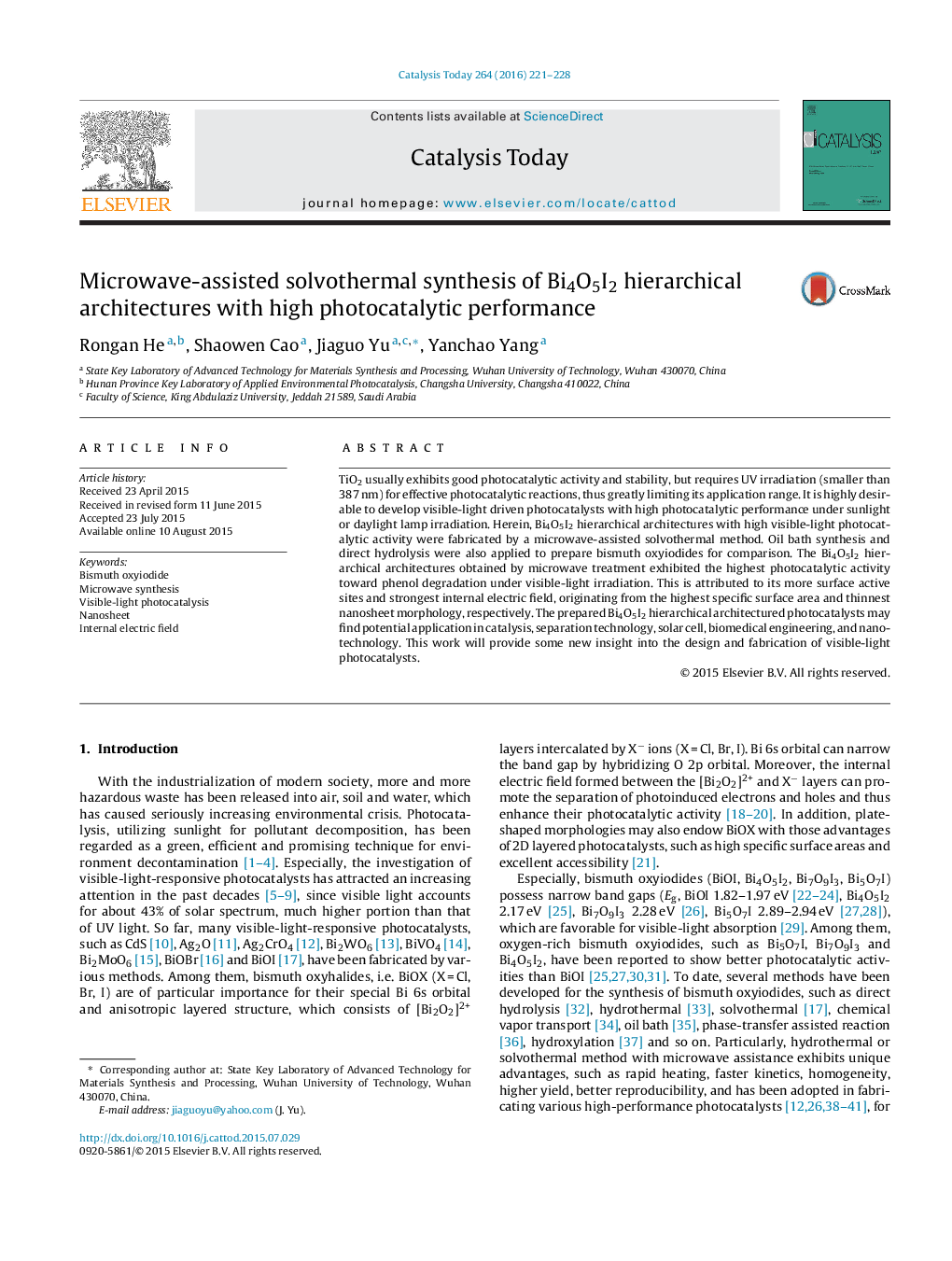| Article ID | Journal | Published Year | Pages | File Type |
|---|---|---|---|---|
| 53319 | Catalysis Today | 2016 | 8 Pages |
•Oxygen-rich Bi4O5I2 fabricated by a microwave-assisted solvothermal method.•The resultant Bi4O5I2 with high specific surface area and small thickness.•The Bi4O5I2 with abundant active sites and strong internal electric field.•The Bi4O5I2 shows high photocatalytic activity for phenol degradation.
TiO2 usually exhibits good photocatalytic activity and stability, but requires UV irradiation (smaller than 387 nm) for effective photocatalytic reactions, thus greatly limiting its application range. It is highly desirable to develop visible-light driven photocatalysts with high photocatalytic performance under sunlight or daylight lamp irradiation. Herein, Bi4O5I2 hierarchical architectures with high visible-light photocatalytic activity were fabricated by a microwave-assisted solvothermal method. Oil bath synthesis and direct hydrolysis were also applied to prepare bismuth oxyiodides for comparison. The Bi4O5I2 hierarchical architectures obtained by microwave treatment exhibited the highest photocatalytic activity toward phenol degradation under visible-light irradiation. This is attributed to its more surface active sites and strongest internal electric field, originating from the highest specific surface area and thinnest nanosheet morphology, respectively. The prepared Bi4O5I2 hierarchical architectured photocatalysts may find potential application in catalysis, separation technology, solar cell, biomedical engineering, and nanotechnology. This work will provide some new insight into the design and fabrication of visible-light photocatalysts.
Graphical abstractFigure optionsDownload full-size imageDownload high-quality image (138 K)Download as PowerPoint slide
